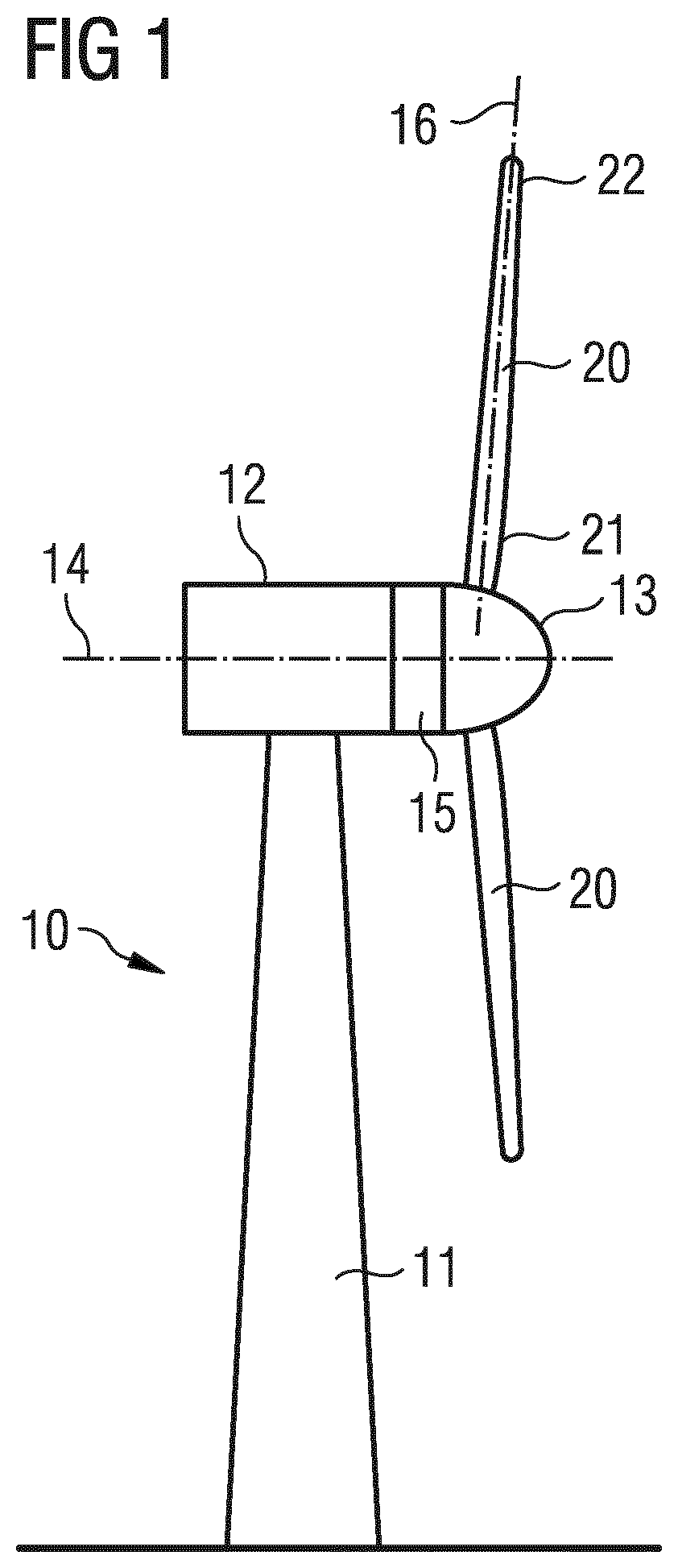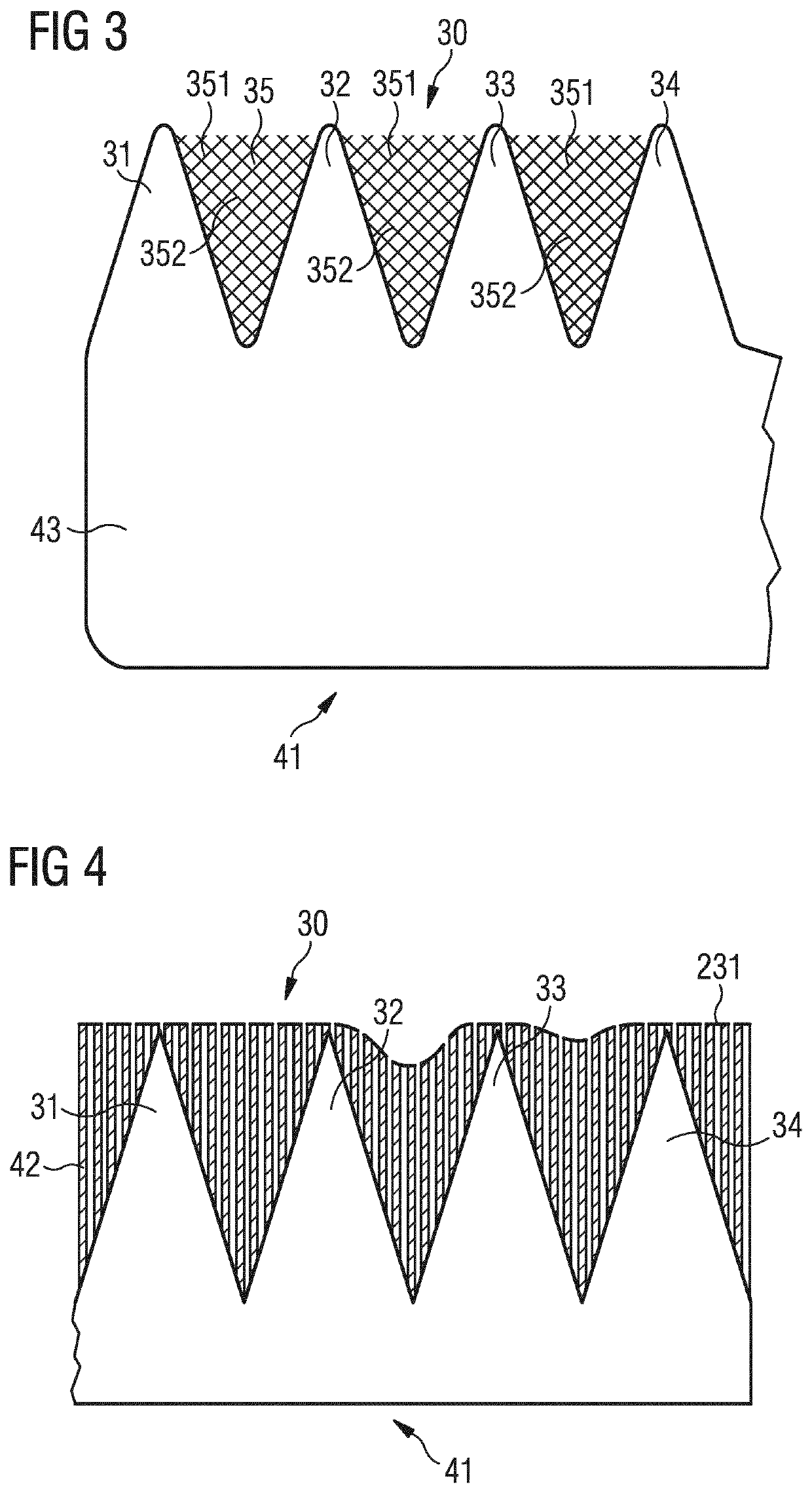Rotor blade with serrations
a technology of rotor blades and serrations, which is applied in the field of rotor blades, can solve the problems of affecting the noise generated by the wind turbine, causing the noise generation of the trailing edge section of the rotor blade, and being a major source of nois
- Summary
- Abstract
- Description
- Claims
- Application Information
AI Technical Summary
Benefits of technology
Problems solved by technology
Method used
Image
Examples
Embodiment Construction
[0077]The illustration in the drawings is in schematic form. It is noted that in different figures, similar or identical elements may be provided with the same reference signs.
[0078]In FIG. 1, a wind turbine 10 is shown. The wind turbine 10 comprises a nacelle 12 and a tower 11. The nacelle 12 is mounted at the top of the tower 11. The nacelle 12 is mounted rotatable with regard to the tower 11 by means of a yaw bearing. The axis of rotation of the nacelle 12 with regard to the tower 11 is referred to as the yaw axis.
[0079]The wind turbine 10 also comprises a hub 13 with three rotor blades 20 (of which two rotor blades 20 are depicted in FIG. 1).
[0080]The hub 13 is mounted rotatable with regard to the nacelle 12 by a main bearing. The hub 13 is mounted rotatable about a rotor axis of rotation 14.
[0081]The wind turbine 10 furthermore comprises a main shaft, which connects the hub 13 to a rotor of a generator 15. The hub 13 is connected directly to the rotor of the generator 15, thus ...
PUM
| Property | Measurement | Unit |
|---|---|---|
| angle | aaaaa | aaaaa |
| porosity | aaaaa | aaaaa |
| porosity | aaaaa | aaaaa |
Abstract
Description
Claims
Application Information
 Login to View More
Login to View More - R&D
- Intellectual Property
- Life Sciences
- Materials
- Tech Scout
- Unparalleled Data Quality
- Higher Quality Content
- 60% Fewer Hallucinations
Browse by: Latest US Patents, China's latest patents, Technical Efficacy Thesaurus, Application Domain, Technology Topic, Popular Technical Reports.
© 2025 PatSnap. All rights reserved.Legal|Privacy policy|Modern Slavery Act Transparency Statement|Sitemap|About US| Contact US: help@patsnap.com



